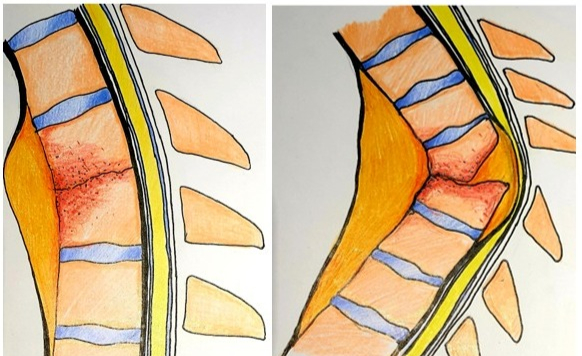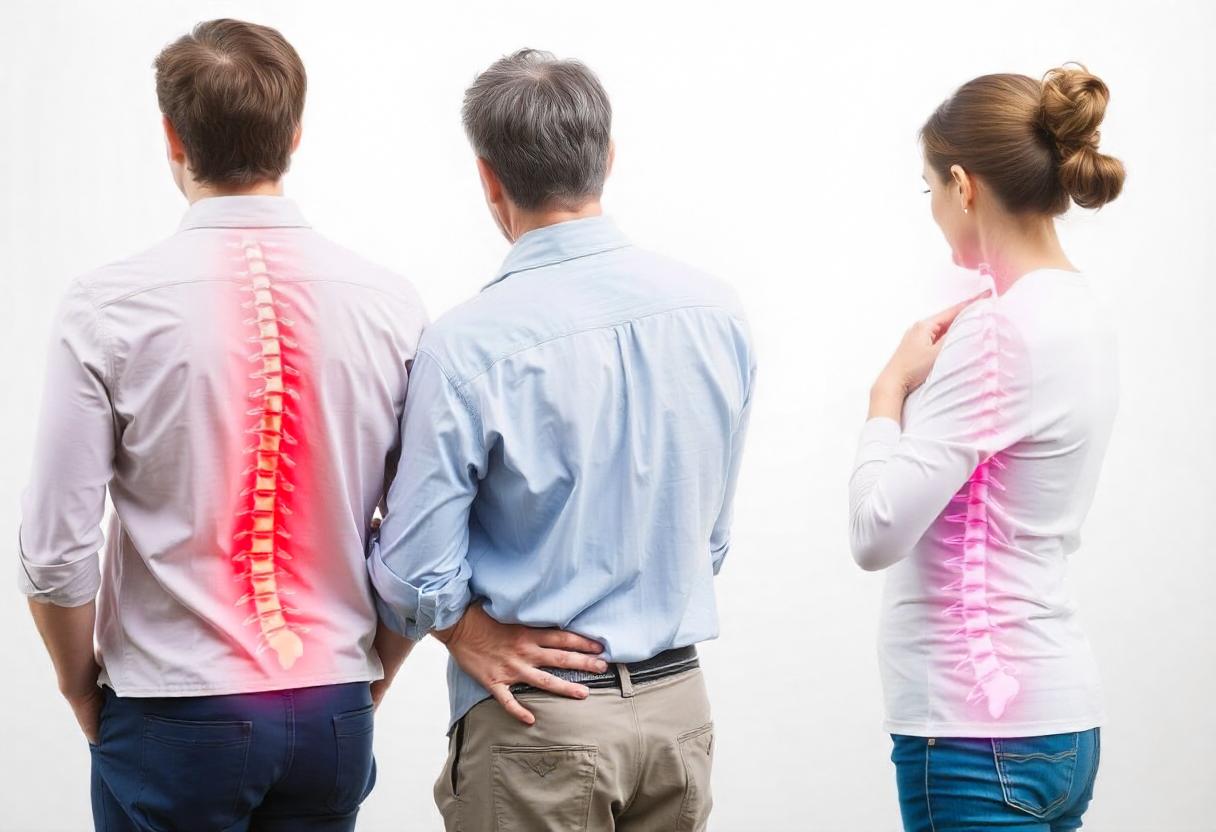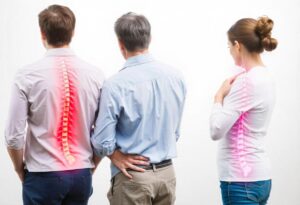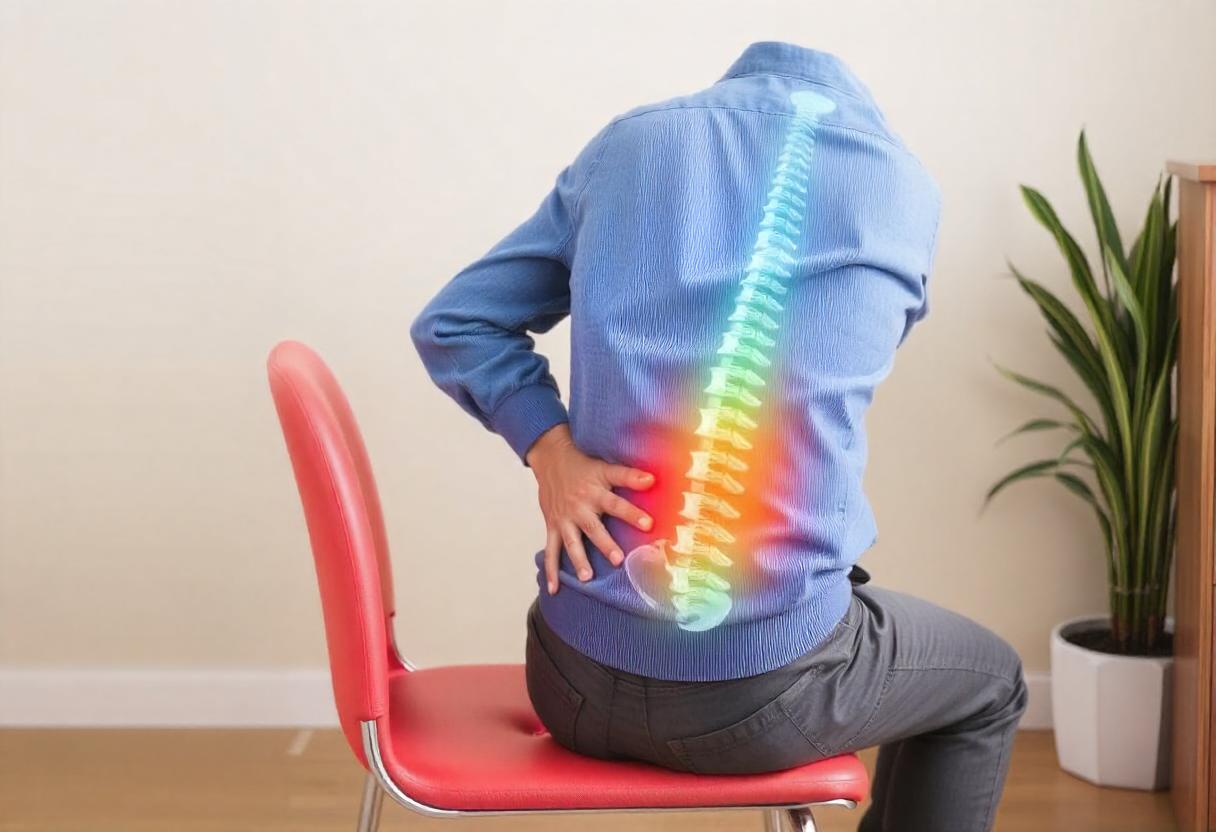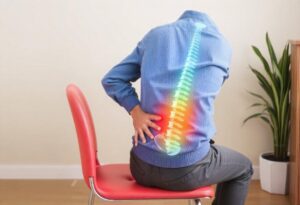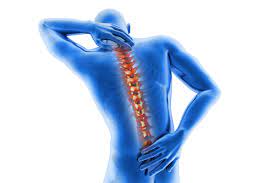What is Cervical Myelopathy?
Literally cervical myelopathy means dysfunction of the spinal cord in the cervical region (neck) The dysfunction is due to compression of the spinal cord in the neck. This compression can result from various causes; the commonest being age-related degenerative(wear & tear) changes, followed by disc herniations, spinal canal stenosis, spinal infections, tumors or injuries.
Cervical spondylotic myelopathy can affect anyone at any age, but it’s more common among males and elderly. The average age of a diagnosis is 64. It is the most common type of non traumatic spinal cord dysfunction in patients older than 55 years
It is one of the most commonly missed & under diagnosed problems amongst the spine disorders. Diagnosis is often delayed, which can lead to poor outcomes.
A well-known Spine Specialist in Vizag, Dr. B. Leela Prasad is known for accurately diagnosing and treating complicated spine problems. He is one of the best Cervical Spine Specialists in Vizag and has helped many people with neck pain, spinal cord compression, and other connected problems. A lot of people have found relief and better mobility with his advanced Cervical Myelopathy Treatment in Vizag. This has made him one of the most trusted spine doctors in the area.
Symptoms
In the early stages, patients may be having only very subtle symptoms like neck pain, feeling of heaviness and numbness in the legs and clumsiness of hands These are usually mistaken for ‘general weakness’ by patients and sometimes by doctors as well. As the disease progresses, the symptoms become more and more obvious
In the later stages, slipping of footwear unknowingly , swaying while walking, feeling of tightness of legs, loss of balance on closing eyes, difficulty in climbing stairs and stepping into vehicles are the common symptoms in the legs. Patients will not be able to perform activities involving fine motor skills and coordination of hands like buttoning and unbuttoning shirts, operating mobile phones, counting currency notes and change in hand writing. In the advanced stages, patients may be unable to walk without support, unable to firmly grasp objects in the hand.The hands become deformed and they may not be able to feed themselves, brush their teeth and clean themselves.
Finally , the legs become paralysed and patients become bedridden; they may lose control in passing urine and motion.
How is cervical myelopathy diagnosed?
Cervical myelopathy is difficult to diagnose in the early stages. Only a thorough clinical history, physical examination combined with appropriate investigation will clinch the diagnosis. MRI scan of the spine shows the extent and severity of compression . CT scans and X-rays give additional information regarding the nature of compression and also help in planning the surgery.Nerve conduction studies may be done whenever the diagnosis is in doubt.
Natural history Prognosis
The natural history varies from patient to patient.
In about 20% of patients the symptoms may remain static or may progress very slowly over a period of time. In more than two thirds of patients symptoms worsen gradually over a period of months to years.In very few cases, patients may rapidly deteriorate, especially after a fall.
Cervical myelopathy usually worsens gradually if left untreated. Severe cases may cause permanent, irreversible nerve damage, which can lead to complications like intense pain and paralysis of all limbs .
Treatment
Nonsurgical management–
Non-surgical treatment plays a very limited role in cervical myelopathy. Doctors manage mild disease without worsening or functional impairment non-surgically, but they observe and examine patients regularly for any signs of worsening.
Nonsurgical options may include:
- neck brace ( cervical collar)
- physical therapy
- medications.
Surgical treatment–
Doctors recommend surgery for all patients who experience functional impairment or worsening symptoms.
The main aim of surgery is to prevent further worsening of patients’ symptoms. Patients usually recover gradually and slowly after surgery, and they may start noticing significant improvement after a few weeks to months. Results of surgery depend on many factors : the duration and severity of symptoms, speed of worsening of symptoms, extent of the disease(number of levels involved ),nature of compression, age of the patient and associated comorbidities.
Young patients with single-level involvement achieve very good functional recovery when they undergo surgery in the early stages of the disease. In advanced stages, significant recovery may not occur even after surgery.
Surgical procedure
The recommended surgical procedure can vary based on the nature of compression(soft disc vs hard bone), extent of disease( number of levels involved), alignment of cervical spine , age and general health of the patient. It may include one or a combination of the following:
- Anterior( from front) cervical discectomy and fusion.
- Laminectomy
- Laminoplasty
- Posterior(from behind) spinal fusion
- Disk replacement.
How can you prevent cervical myelopathy?
As mentioned earlier, cervical myelopathy is commonly due to degenerative changes, trauma , tumors and spinal infections, all of which are not preventable.
Early diagnosis and surgery are key to good results
Why Choose Dr. Leela Prasad for Cervical Myelopathy Treatment in Vizag?
When you choose Dr. B. Leela Prasad for Cervical Myelopathy Treatment in Vizag, you entrust your spine health to a highly respected and experienced professional in the area. As a top spine surgeon in Visakhapatnam, Dr. Leela Prasad uses cutting-edge diagnostic tools. He uses custom treatment plans for each patient to make sure they get better and stay healthy in the long run.
Expertise in Cervical Spine Treatment in Vizag based on years of successful surgeries. Especially when it comes to treating complicated cervical spine disorders. While Dr. B. Leela Prasad focuses on patient safety, minimally invasive methods, and compassionate care. H is still the first choice for people in Vizag who want specialised treatment for cervical myelopathy and other spine-related problems.


